Renewable & Nonrenewable Resources Teaching Resources
Teach your students all about renewable and nonrenewable resources this school year with printable worksheets, activities, vocabulary guides and more created by teachers for your elementary science lessons.
Aligned to the NGSS, this collection of teaching resources has been created with differentiated options and editable versions to make your lesson plans easier to create and save you time! Each resource in this collection has been thoroughly reviewed by a member of the Teach Starter teacher team to ensure it's ready for your lesson planning and your students.
New to teaching this section of the elementary science curriculum or looking for fresh ideas to explain the difference between renewable and nonrenewable resources and why these are so important? Read on for a primer from our teacher team!
What Are Natural Resources? A Kid-Friendly Definition
In order to explain renewable and nonrenewable and the differences between them, students first need to understand what it means to have a natural resource. Here's a natural resources definition to share with your students:
Natural resources are materials or substances that are naturally occurring in the environment and are valuable to humans for their economic, environmental, or cultural benefits. These resources are generally classified into two categories — renewable and nonrenewable resources.
What Is a Renewable Resource?
Need a kid-friendly way to explain this concept? Try this one: A renewable resource is a natural resource that we can use over and over again without running out. It's sort of like having a cookie jar that never runs out of cookies. Only in this case, the "cookies" provide the energy we need for things like heating our homes and running the electrical items in our schools.
Sometimes renewable resources will be regenerated naturally, while others require human intervention (for example, tree planting replenishes the supply of wood but requires people to do some work!).
What Are Some Examples of Renewable Resources?
Some examples of renewable resources include:
- Sun — The sun is one of the most abundant renewable resources in the US, and it is used to create energy with the help of solar panels.
- Wind — Wind turbines harness this renewable resource, generating electricity as gusts of wind move through them.
- Water — Hydroelectric dams are often used to create energy with this renewable resource.
What Is a Non-Renewable Resource? A Kid-Friendly Definition
As the prefix "non" would indicate, nonrenewable resources are essentially the opposite of the renewable type. These natural resources used to create energy cannot be easily replenished or replaced.
Some may be used up entirely over time, and once they're gone, they will be gone for good. Others may come back, but the time it takes to come back is so long that it won't happen for thousands or even millions of years, which means we will run out too quickly.
Many nonrenewable resources create other issues, such as the harm that burning fossil fuels represents to the environment. Nonrenewable resources are often considered unsustainable, and their use is a major contributor to environmental degradation, climate change, and other global issues.
What Are Some Examples of Nonrenewable Resources?
Some examples of nonrenewable resources that you can share with your students include:
- Fossil fuels — Nonrenewable fossil fuels like coal, oil and natural gas are used for electricity and heat but would take millions of years to regenerate.
- Minerals — Gold, silver and copper are all minerals that are mined for use in electronics, jewelry and more, but they won't just replenish naturally.
Renewable Energy vs. Non-Renewable Energy — What's the Difference?
Many of the resources we have are tied to the energy we use to power our houses, our cars and more. We classify these energy types as either renewable energy or non-renewable energy.
So what's the difference? Let's look at a breakdown you can share with students.
Renewable Energy
The energy that comes from natural resources that can be replenished over a relatively short period of time is called renewable energy.
Types of renewable energy include:
- Solar
- Wind
- Geothermal
- Biomass
Non-Renewable Energy
Non-renewable energy is energy that is produced with finite resources that cannot be easily replenished.
Sources of non-renewable energy include:
- Coal
- Oil
- Natural gas
- Free Plan
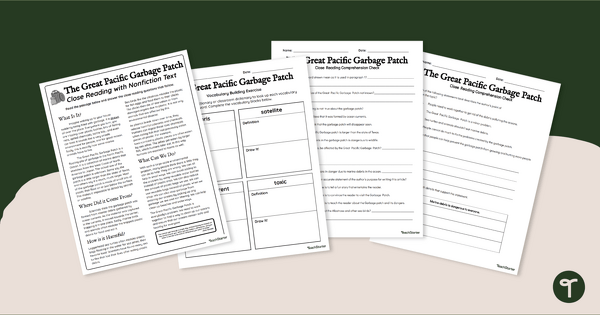
Comprehension Worksheets - The Great Pacific Garbage Patch
Read and learn about the Great Pacific Garbage Patch with a reading comprehension passage and worksheet pack.
- Free Plan
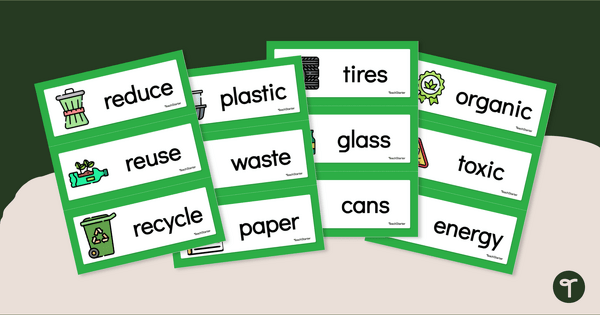
Reduce, Reuse, Recycle - Environmental Word Wall
Help your young students learn about recycling and conservation with an illustrated word wall.
- Free Plan

Where Do Natural Resources Come From? Differentiated Worksheet
Explore where natural resources are found with a pair of differentiated natural resource worksheets.
- Free Plan
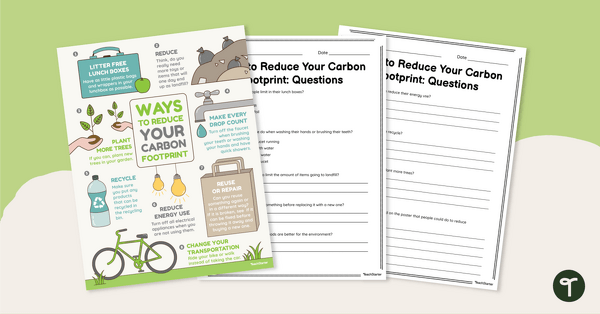
Ways to Reduce Your Carbon Footprint – Poster and Worksheet
Explore how to reduce your carbon footprint with this poster and accompanying comprehension worksheet.
- Free Plan
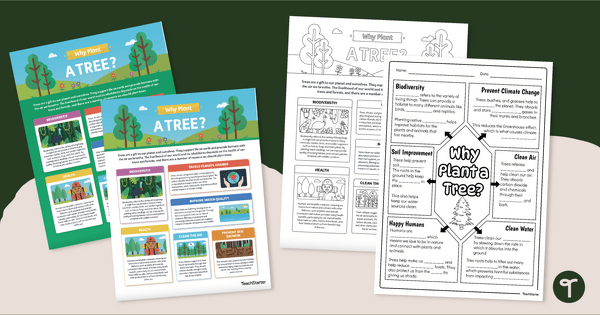
Why Plant a Tree? Infographic Analysis Activity & Posters
Teach about Arbor Day or Earth Day with an infographic poster and a cloze note-taking worksheet about the importance of trees in our environment.
- Plus Plan
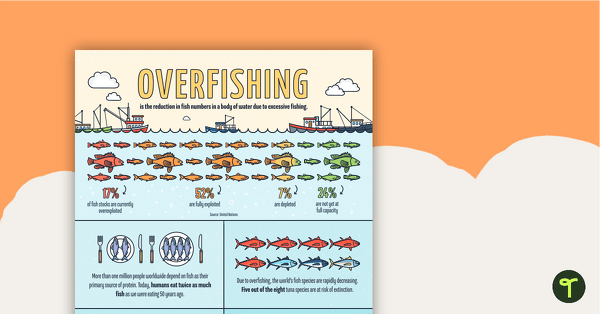
Overfishing – Infographic Poster and Worksheet
Explore overfishing and its effects on marine environments with this eye-opening infographic poster and accompanying comprehension worksheet.
- Plus Plan

Earth Day Coloring Pages
Give your students these beautiful Earth Day coloring sheets to promote sustainability and conservation.
- Plus Plan
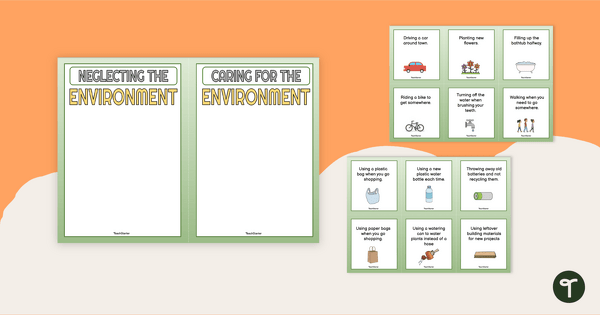
Sustainability Activity - Caring for the Environment Sort
Promote sustainable living with a sustainability sorting activity.
- Plus Plan
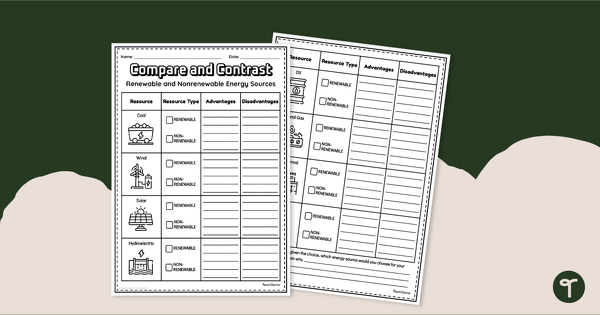
Comparing Energy Sources Worksheet & Graphic Organizer
Compare and contrast different types of renewable energy sources with a printable graphic organizer.
- Plus Plan
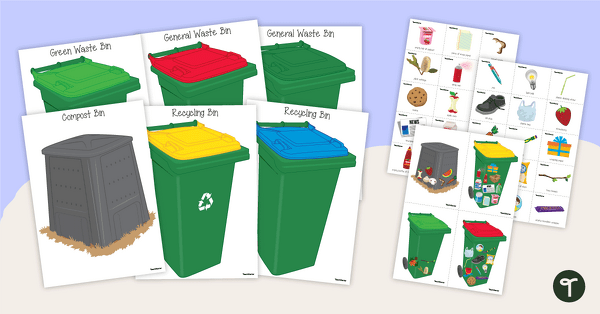
Trash, Recycle, or Compost Sorting Activity
Learn about recycling, composting, and sustainable practices for waste management with a fun sorting activity.
- Plus Plan
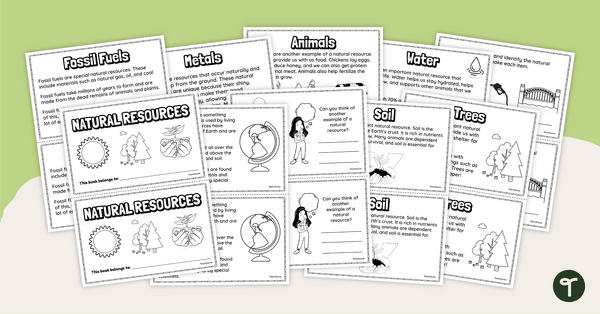
Natural Resources Mini Book
Learn about natural resources with this printable mini book.
- Free Plan

Recycling I Spy and Sort Worksheet
Sort different pieces of trash into their appropriate bins with this I Spy worksheet.
- Plus Plan
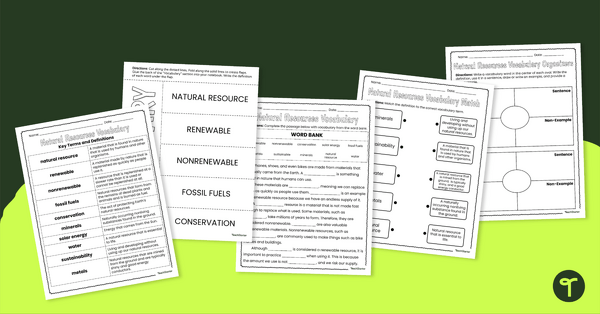
Natural Resources Vocabulary Worksheets
Practice and review vocabulary terms associated with natural resources with this worksheet pack.
- Free Plan
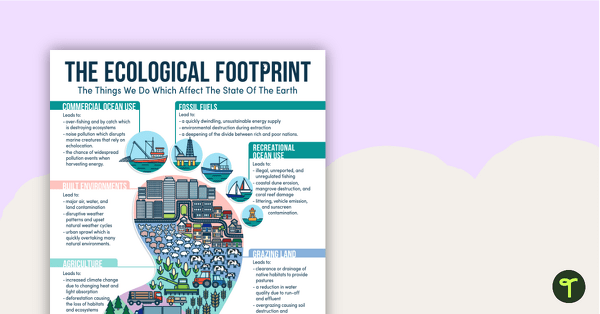
My Ecological Footprint - Reference Sheet
Teach your students about the things we do that affect the Earth with an ecological footprint reference sheet.
- Plus Plan
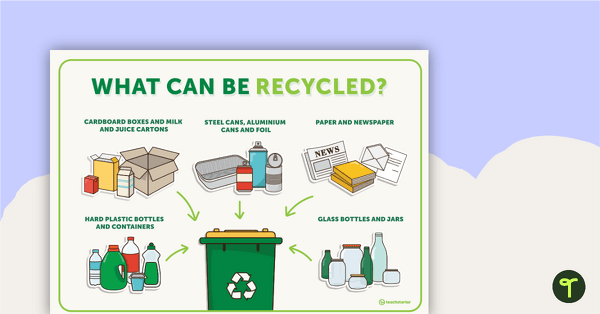
What Can Be Recycled? Poster
A poster showing the products that can be recycled.
- Plus Plan
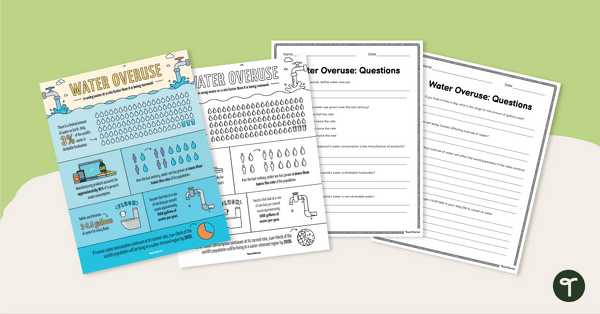
Water Overuse – Infographic Poster and Worksheet
Explore the overuse of water and its effects on the world’s population with this eye-opening infographic poster and accompanying comprehension worksheet.
- Plus Plan
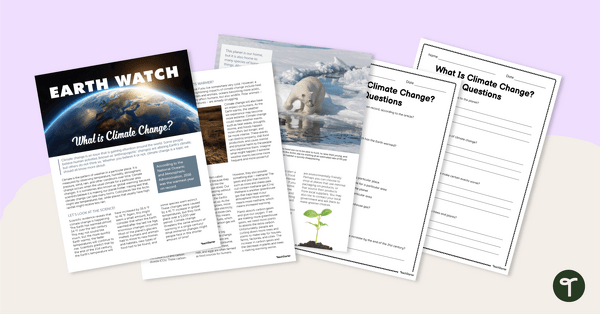
What Is Climate Change? Comprehension Worksheet
Teach your students about the perils of climate change with this comprehensive article with accompanying comprehension questions.
- Plus Plan
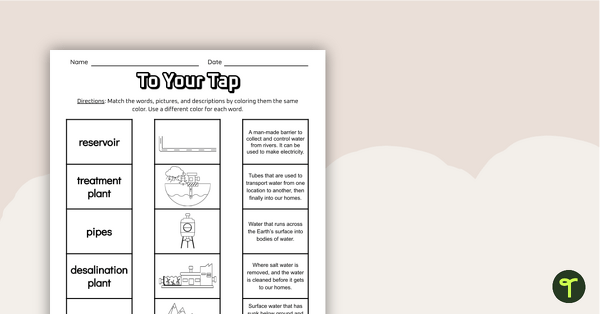
To Your Tap - Water Worksheet
Identify the places where water travels before entering homes with a vocabulary-matching worksheet.
- Plus Plan
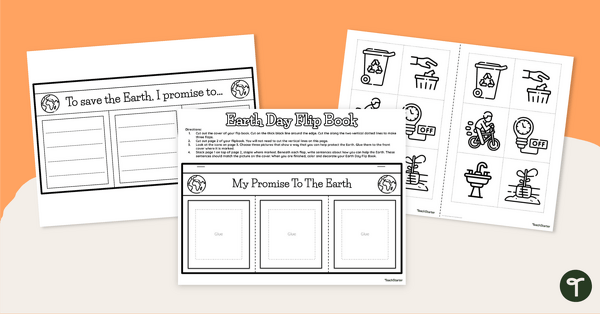
My Promise to the Earth - Flipbook Template
Make a promise to protect the planet with a printable Earth Day flip book.
- Plus Plan
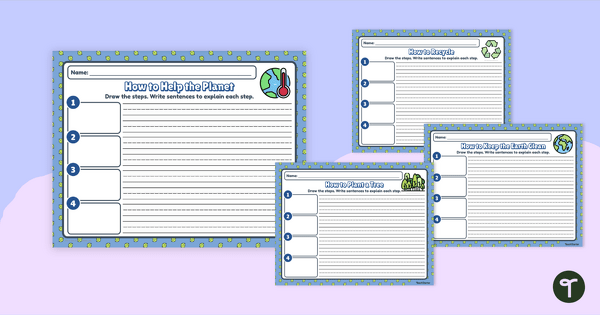
Recycling Writing Prompts - Primary
Show off your procedural writing skills with a pack of recycling writing prompts.
- Plus Plan
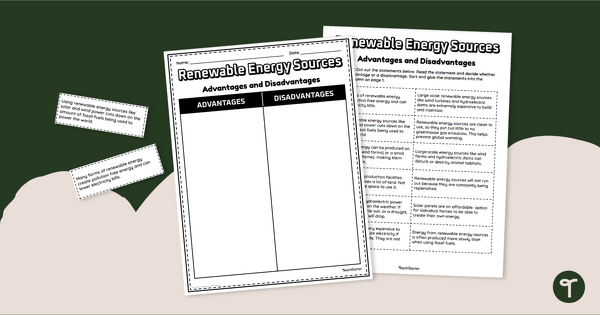
Advantages and Disadvantages of Renewable Energy Worksheet
Discover the advantages and disadvantages of renewable energy sources with a cut-and-paste sorting worksheet.
- Plus Plan

Conserve Energy in the Classroom – Student Reminders
Inspire your students to conserve electricity with these energy-saving reminders that can be placed around the classroom.
- Plus Plan
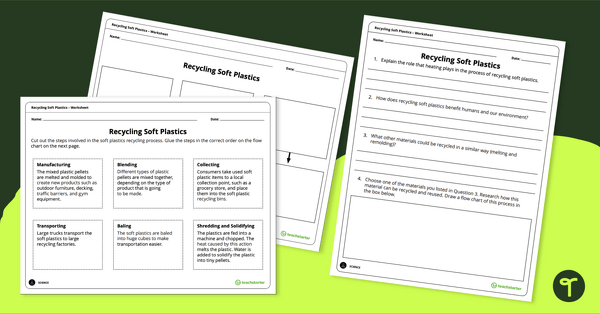
How is Plastic Recycled? – Recycling Worksheets
Explore the process of recycling plastic with a printable recycling worksheet.
- Plus Plan
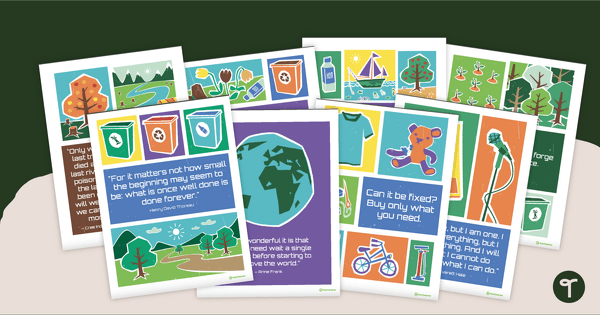
Earth Day Quotes – Environmental Quote Poster Pack
Inspire sustainable practices in the classroom with a pack of printable Earth Day Quotes.
- Free Plan
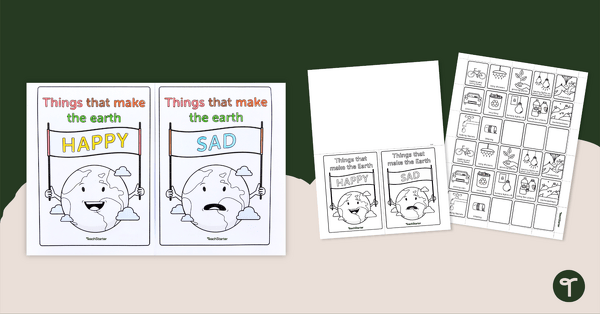
Environmental Awareness Flip Book - Earth Day Activity
Use this flip book to build awareness of actions that are good and bad for the environment.
- Plus Plan
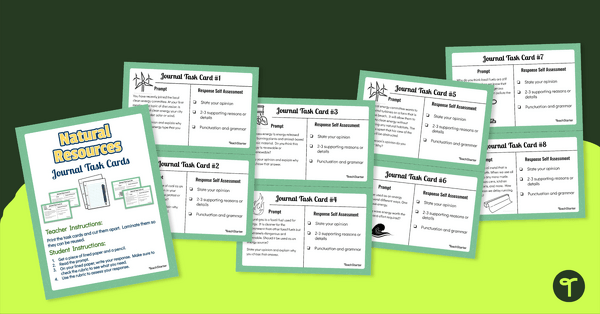
Natural Resources – Journal Task Cards
Integrate science and writing while responding to specific scenarios regarding natural resources with this set of 24 journal task cards.
- Plus Plan
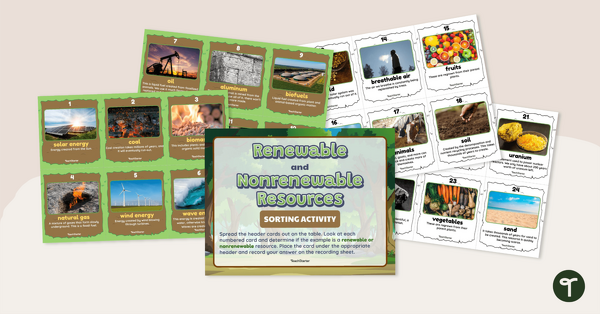
Renewable and Nonrenewable Resources – Sorting Activity
Categorize resources as either renewable or nonrenewable with this 24-card sorting activity
- Plus Plan
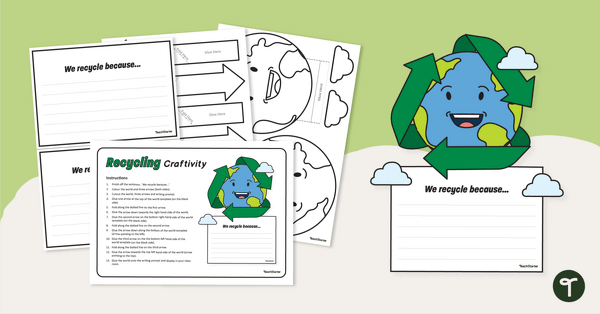
Recycling Craftivity - We Recycle Because...
Write about why we recycle and create this recycling craft to display in the classroom.
- Free Plan
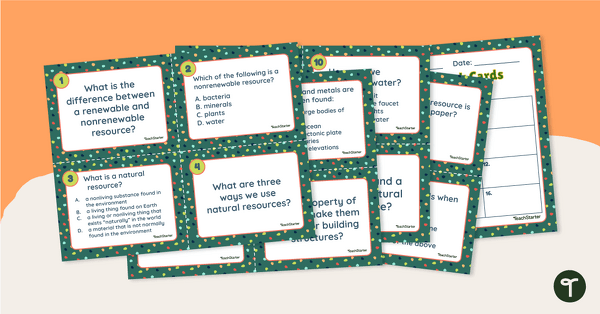
Natural Resources Task Cards
Answer questions about natural resources and their uses with this set of 16 task cards.
- Free Plan
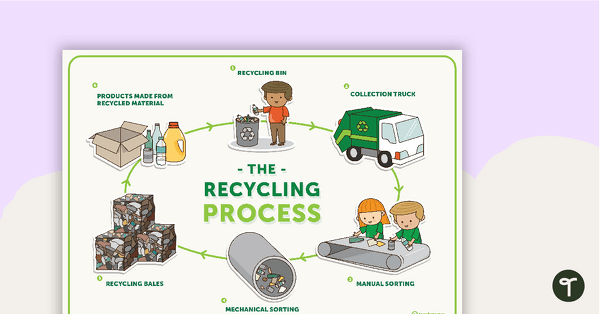
The Recycling Process Poster
Show your students the process materials go through when they are recycled with printable recycling posters.
- Plus Plan
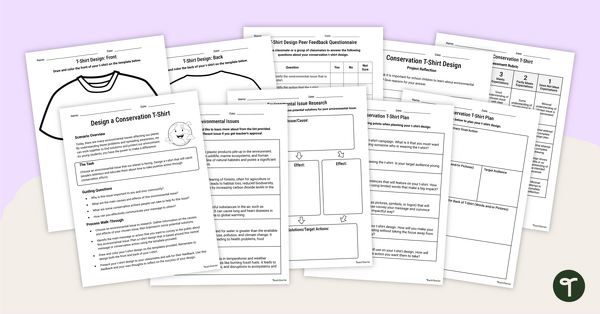
Design a Conservation T-Shirt – Inquiry-Based Project
Use this conservation project to teach your students about how to ignite positive change in the face of a global environmental crisis.
- Plus Plan

Environmental Impact Science Experiments
Use these simple science experiments to teach your students about environmental issues such as oil and water pollution, soil quality and climate change.
- Renewable & Nonrenewable Resources Worksheets
- Renewable & Nonrenewable Resources Posters
- Renewable & Nonrenewable Resources Templates
- Renewable & Nonrenewable Resources for Kindergarten
- Renewable & Nonrenewable Resources for 1st Grade
- Renewable & Nonrenewable Resources for 2nd Grade
- Renewable & Nonrenewable Resources for 3rd Grade
- Renewable & Nonrenewable Resources for 4th Grade
- Renewable & Nonrenewable Resources for 5th Grade
- Renewable & Nonrenewable Resources for 6th Grade